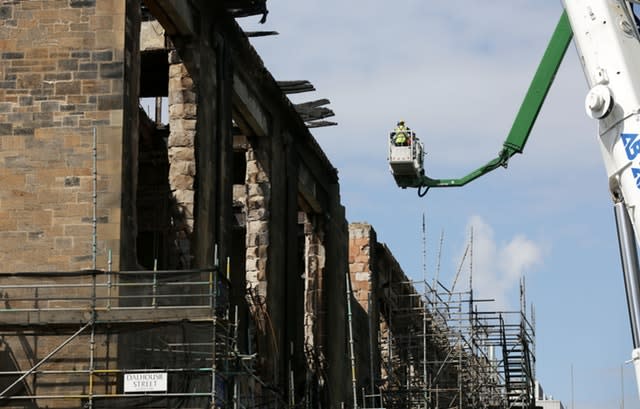Ducts which allowed 2014 art school fire’s spread still in use during 2018 blaze
Ventilation ducts which allowed the Glasgow School of Art fire to take hold four years ago were still in place when a second blaze broke out this year, a Holyrood committee has been told.
The ducts were being used to run cables and pipes through the Charles Rennie Mackintosh building during its reconstruction, and were due to be fire-stopped at the end of the project, according to architects.
The world-renowned art school was extensively damaged in June while it was undergoing a £35 million restoration following the previous fire in May 2014.

The work was being led by Page\Park Architects, with construction firm Kier appointed as the main contractor.
Representatives from both organisations appeared before the Scottish Parliament’s Culture Committee, which has been taking evidence on the circumstances surrounding the second blaze.
A report into the 2014 fire by the Scottish Fire and Rescue Service found that old ventilation ducts in the building assisted its spread from a basement studio into neighbouring rooms and upwards through the building.
Convener Joan McAlpine said: “We know about these ducts, how dangerous they were.
“Some of them would have still been in place because not all of the building was destroyed in 2014.

“Did you take immediate measures to ensure that that issue with the ducts was dealt with at an early stage in the construction project?”
David Paton of Page\Park Architects said: “It wasn’t done at that stage because these ducts were going to be used for the routing for all the services, and then at the end of that process they were going to be fire-stopped.”
David Page, director of the firm, added: “It still remained a conservation project, so we were unable to build new ducts or new distribution systems, we had to use the systems, the circulation that was there.”
Pressed on whether Glasgow School of Art raised this as an issue, Mr Paton said: “I don’t recall that.
“They were very much part of understanding what the build process is, and these ducts were being used for pipe work and for cables, and at the time of the fire, all of that installation was ongoing, so there was a myriad of cables and pipes going up through these spaces which would be closed off in due course.”

He added: “There was a significant process put in place to protect the building at that point.”
Brian McQuade, managing director of Kier Scotland, said: “It was part of the construction process that they (the ducts) had to be open, and we could not actually put the wires and the steelwork pipes for the final system in without them.”
Ms McAlpine also raised the findings of an inquiry into a leisure centre built by Kier in Dumfries, published in April 2018.
Consultant Professor John Cole found a series of defects in the DG One building and highlighted concerns about “extensive failures” in regard to fire-stopping.
She asked Mr Paton if the report had been raised with Kier in the context of the art school work.
“As far as I am concerned that was irrelevant to this contract,” he said.
“We were focused on the work that we were doing and making sure that what Kier was doing on the site was correct.”

 Yahoo News
Yahoo News 
